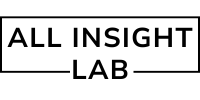Introduction
Quantum Computing and Python: The Future of Next-Gen Programming. Quantum computing is no longer a futuristic concept; it’s a rapidly evolving field that could revolutionize industries ranging from cryptography to artificial intelligence. While traditional computing relies on bits (0s and 1s), quantum computing leverages quantum bits or qubits, which can exist in multiple states simultaneously, thanks to principles like superposition and entanglement.
One of the biggest reasons for Python’s dominance in this field is its simplicity, versatility, and an extensive ecosystem of libraries. Tech giants such as Google, IBM, and Microsoft are actively investing in quantum computing, and Python is the primary language used to interact with quantum hardware and simulators. But what does the future hold for Python in quantum computing? Let’s dive into the emerging trends and what Python developers can expect in 2025 and beyond.
Table of Contents
Why Python for Quantum Computing?
Python has gained massive popularity in the quantum computing space because of its ability to integrate seamlessly with quantum frameworks. Some of the biggest reasons why Python is the go-to language include:
- Readability and Simplicity: Python’s syntax makes it easier to write complex algorithms.
- Extensive Libraries: Python provides various quantum computing libraries, such as Qiskit (IBM), Cirq (Google), PennyLane (Xanadu), and PyQuil (Rigetti).
- Community and Open-Source Support: The open-source nature of Python means a growing number of researchers and developers contribute to quantum computing tools.
- Integration with AI & Machine Learning: Python’s strong machine learning ecosystem (TensorFlow, PyTorch, Scikit-learn) complements quantum computing research.
Major Quantum Computing Libraries in Python
1. Qiskit (IBM)
Qiskit (https://qiskit.org/) is an open-source quantum computing framework developed by IBM. It allows developers to design, simulate, and execute quantum circuits on real IBM quantum processors. The Qiskit Aer module enables high-performance quantum simulations, while Qiskit Terra helps create and optimize circuits.
2. Cirq (Google)
Cirq (https://quantumai.google/cirq) is Google’s quantum computing framework, designed specifically for near-term quantum devices. It provides a low-level approach, making it suitable for developers who want more control over quantum gates and circuit optimization.
3. PennyLane (Xanadu)
PennyLane (https://pennylane.ai/) is a quantum machine learning (QML) framework that integrates quantum circuits with deep learning libraries like PyTorch and TensorFlow. This makes it a crucial tool for developing hybrid quantum-classical models.
4. PyQuil (Rigetti Computing)
PyQuil is another open-source library developed by Rigetti Computing. It is specifically designed for quantum-classical hybrid computing and allows users to run quantum programs on Rigetti’s cloud-based quantum processors.
What’s Next for Python in Quantum Computing?
With rapid advancements in quantum hardware and software, here are some key trends we can expect in the coming years:
1. Quantum Cloud Services
As cloud computing has revolutionized traditional IT infrastructure, quantum cloud services are now enabling developers to run quantum algorithms without needing expensive hardware. Companies like IBM, Amazon (Braket), Google, and Microsoft (Azure Quantum) are offering quantum cloud access via Python APIs. This trend is expected to expand significantly by 2026.
2. Quantum Machine Learning (QML)
Python’s role in quantum computing is evolving with the rise of Quantum Machine Learning (QML). Researchers are leveraging quantum circuits to enhance AI models, and Python-based frameworks like PennyLane and TensorFlow Quantum are at the forefront of this revolution. QML is expected to drive breakthroughs in pattern recognition, optimization, and AI-powered decision-making.
3. Post-Quantum Cryptography
One of the biggest threats posed by quantum computing is its potential to break traditional encryption methods like RSA and ECC. Python is playing a crucial role in the development of post-quantum cryptography (PQC) algorithms that can withstand quantum attacks. Libraries like Open Quantum Safe (OQS) provide Python bindings for quantum-resistant encryption protocols.
4. Hybrid Quantum-Classical Computing
While quantum computers won’t fully replace classical computers anytime soon, hybrid quantum-classical models are becoming more common. Python allows seamless integration between classical and quantum processors, making it easier to develop real-world applications. Researchers are working on hybrid algorithms that leverage both types of computing power for tasks like drug discovery and financial modeling.
5. More Accessible Quantum Education
With the rise of Python-based quantum computing frameworks, educational institutions are integrating quantum programming into their curricula. Platforms like IBM Quantum Experience provide free Python-based quantum programming tools, making it easier for students and researchers to experiment with quantum circuits.
How to Get Started with Python for Quantum Computing
If you’re interested in diving into quantum computing with Python, here’s how you can start:
- Learn the Basics of Quantum Computing: Understand key concepts like qubits, superposition, entanglement, and quantum gates.
- Explore Quantum Libraries: Start with Qiskit, Cirq, or PennyLane to build and test quantum circuits.
- Experiment on Cloud-Based Quantum Computers: Use IBM Quantum Experience or Azure Quantum to run real quantum algorithms.
- Take Online Courses: Platforms like Coursera, edX, and MIT OpenCourseWare offer Python-based quantum computing courses.
- Contribute to Open-Source Projects: Join quantum computing research communities and contribute to Python-based quantum libraries.
Conclusion
Python is shaping the future of quantum computing, making it more accessible to developers and researchers worldwide. As quantum hardware improves, Python will continue to evolve, integrating with AI, cryptography, and cloud computing to push the boundaries of what’s possible.
The coming years will witness a shift from theoretical quantum computing to practical applications that impact industries at scale. Whether you’re an AI researcher, a cybersecurity enthusiast, or a developer looking to explore the next big thing, now is the perfect time to start learning quantum programming with Python.
Further Reading
Are you ready to dive into quantum programming? Let’s embrace the quantum revolution with Python!
Find more Python content at: https://allinsightlab.com/category/software-development

